Abstract
1. Plasma concentrations of cortisol and corticosterone measured by competitive protein binding in rats between 5 and 28 days after birth have been related to the intestinal uptake of [125I]polyvinyl pyrrolidone (PVP).
2. Plasma cortisol concentration was consistently low throughout the period studied, but there was an increase in plasma corticosterone concentration at the time (18-21 days) when PVP uptake declined to zero (closure).
3. Injection of a large dose of cortisone acetate 5 days after birth resulted in precocious closure; PVP uptake declined progressively to zero during the 6 days following the injection. Injection of this steroid at 12 days of age caused closure within 4 days.
4. Precocious closure induced by cortisone acetate was closely comparable histologically with natural closure; the decline in PVP uptake was associated with the progressive displacement of vacuolated cells from the villi of the terminal intestine.
5. Injection of corticosterone at either 5 or 12 days after birth also reduced PVP uptake. However, the reduction was transient and uptake returned to control levels some days after the injection.
6. The temporary reduction in PVP uptake following corticosterone injection was not associated with any change in the histological appearance of the small intestine at the light microscope level.
7. The injection of either cortisone acetate or corticosterone was followed by a period of impaired body growth and also a reduction of adrenal weight in animals injected at 12 days but not in animals injected at 5 days.
Full text
PDF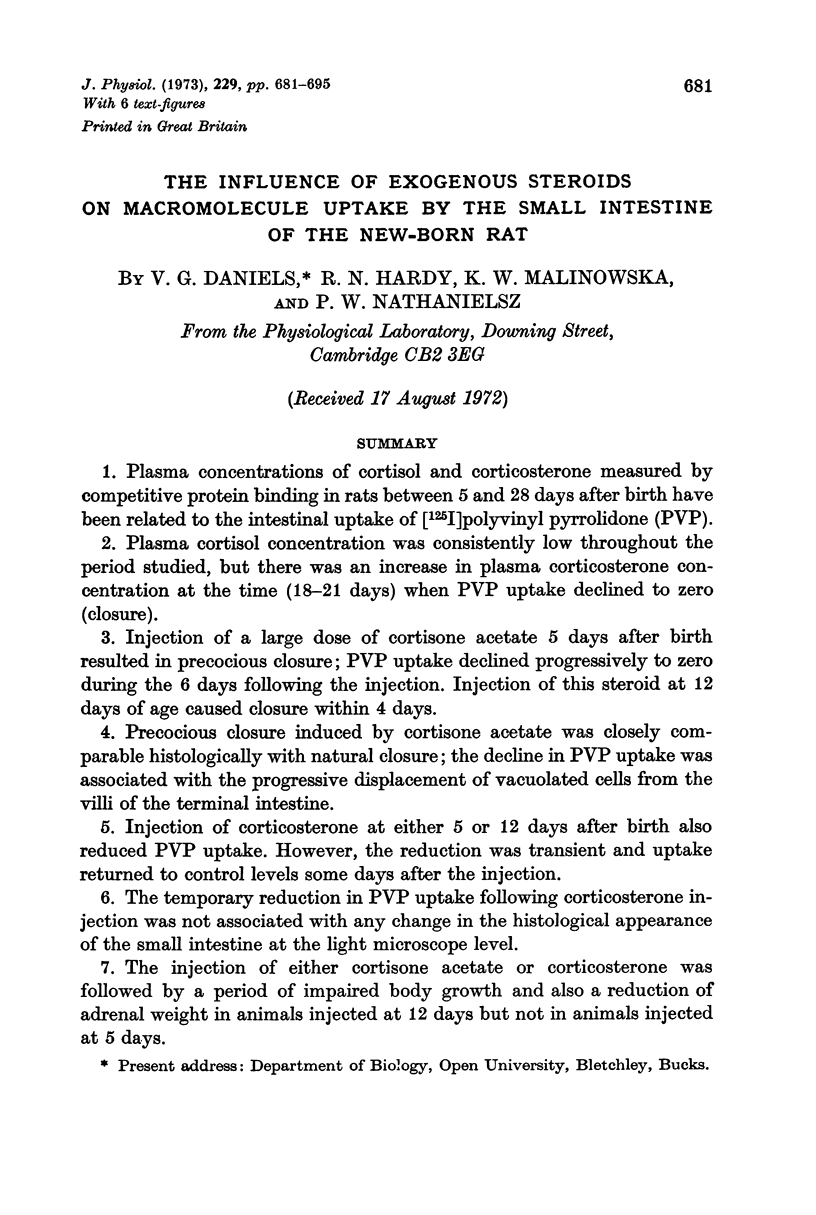
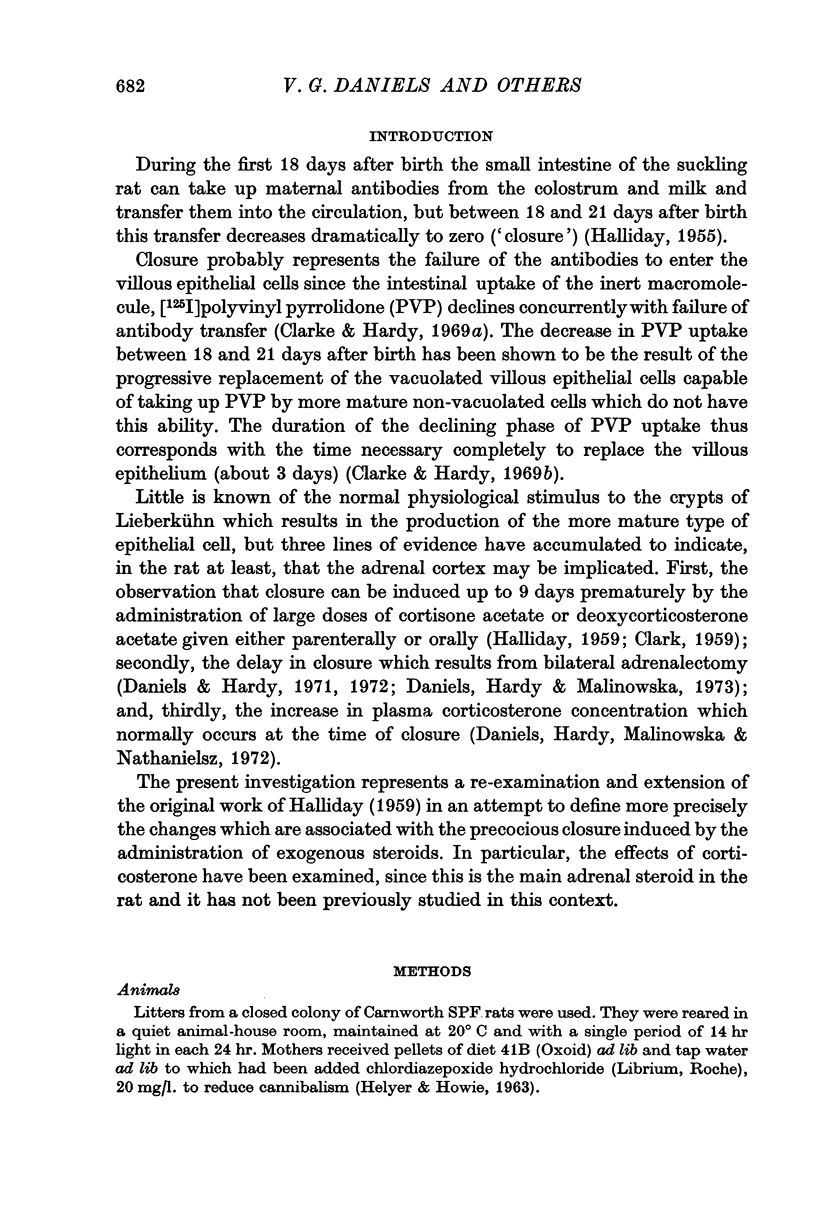
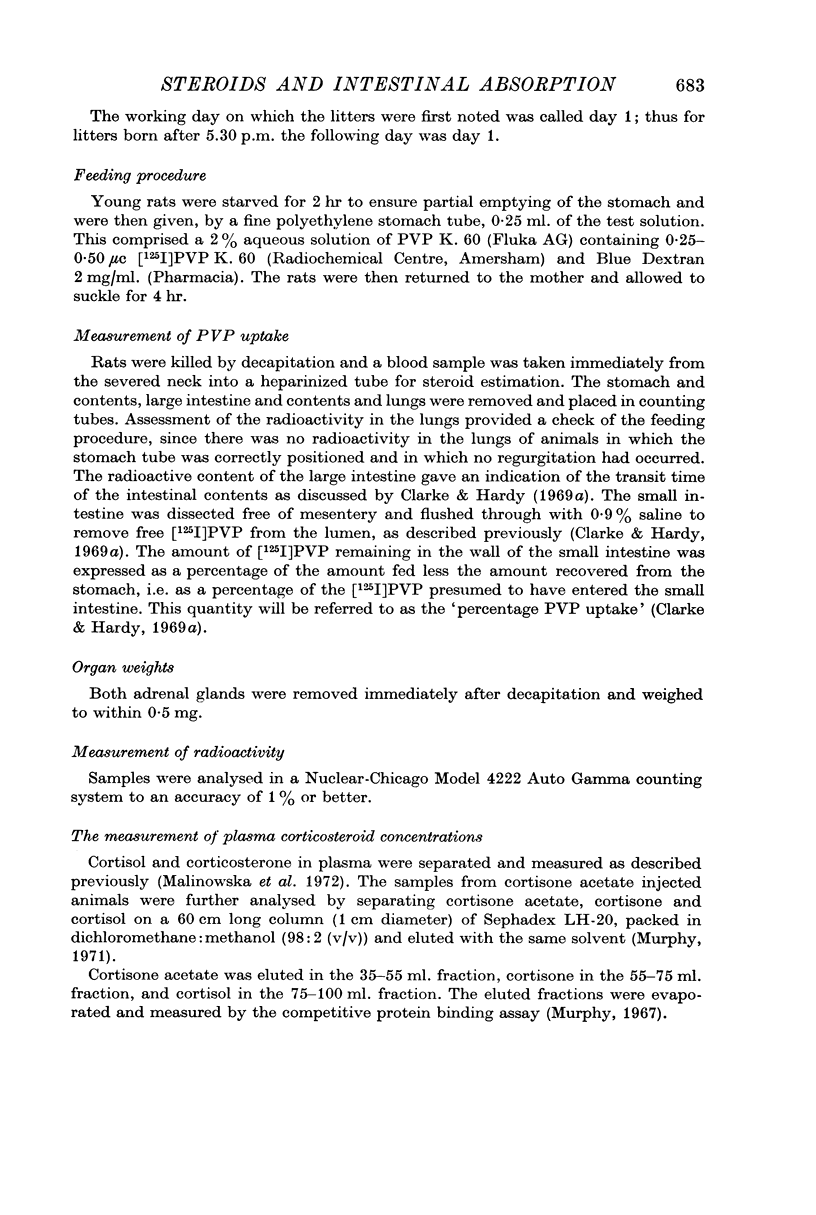
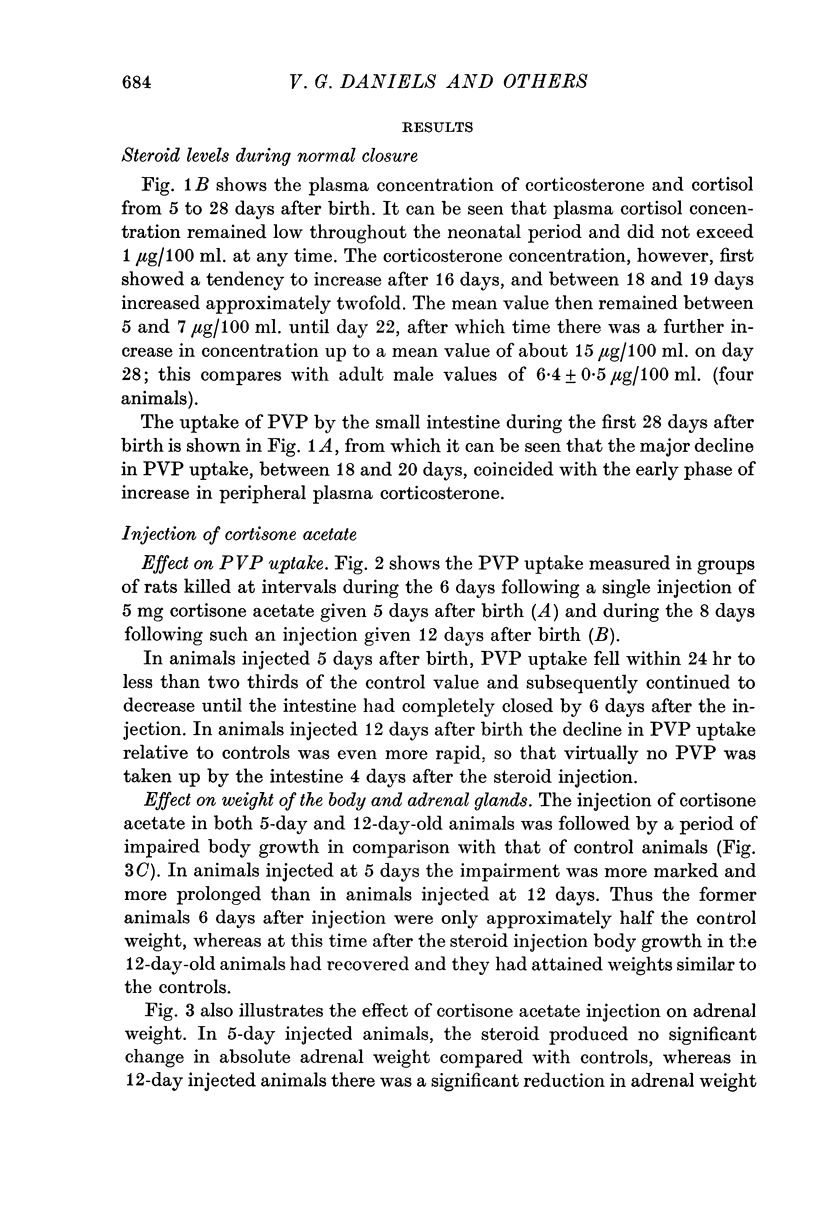
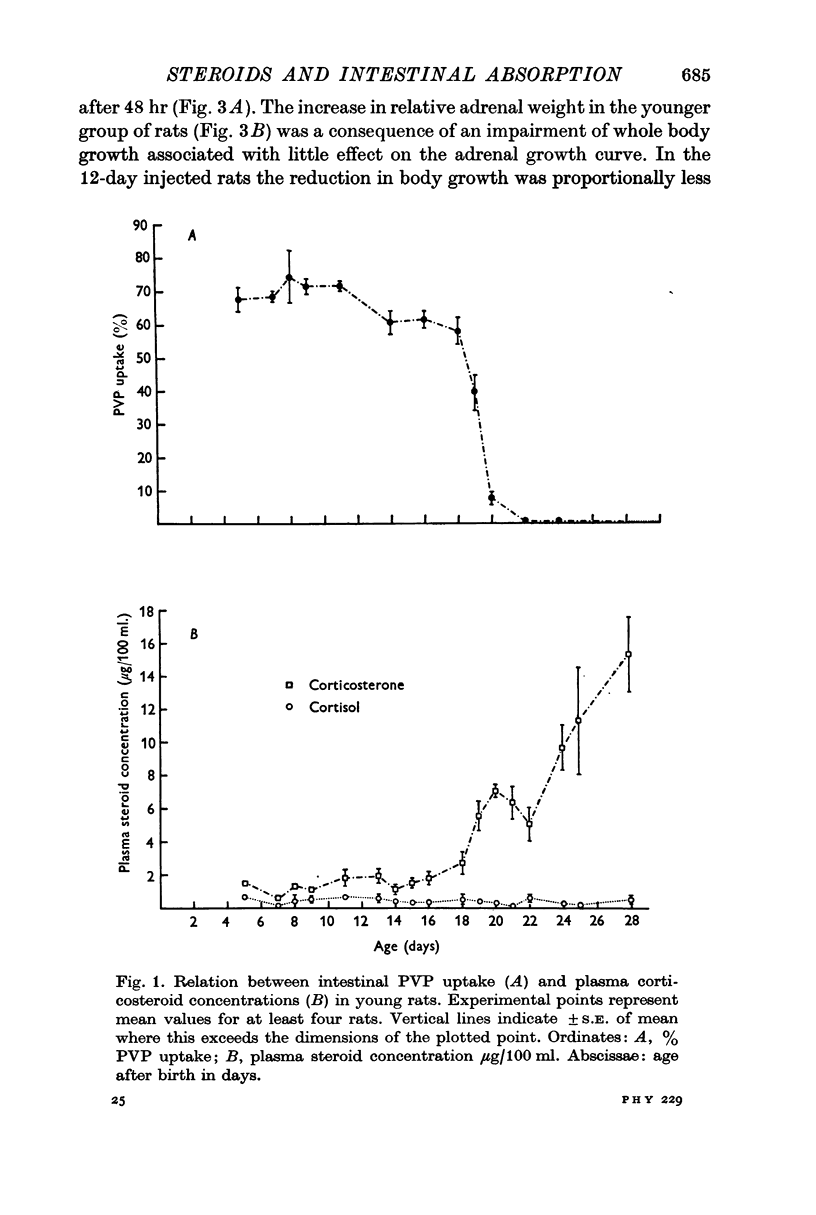
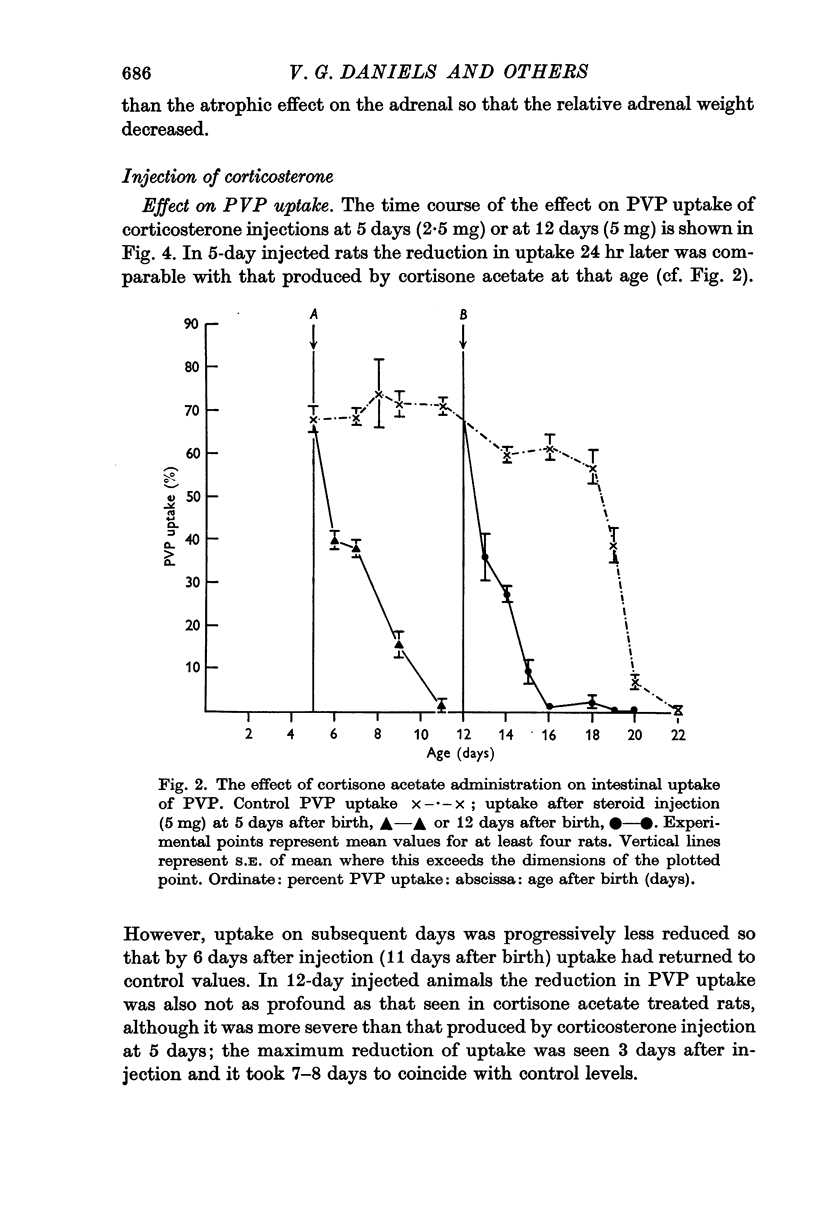
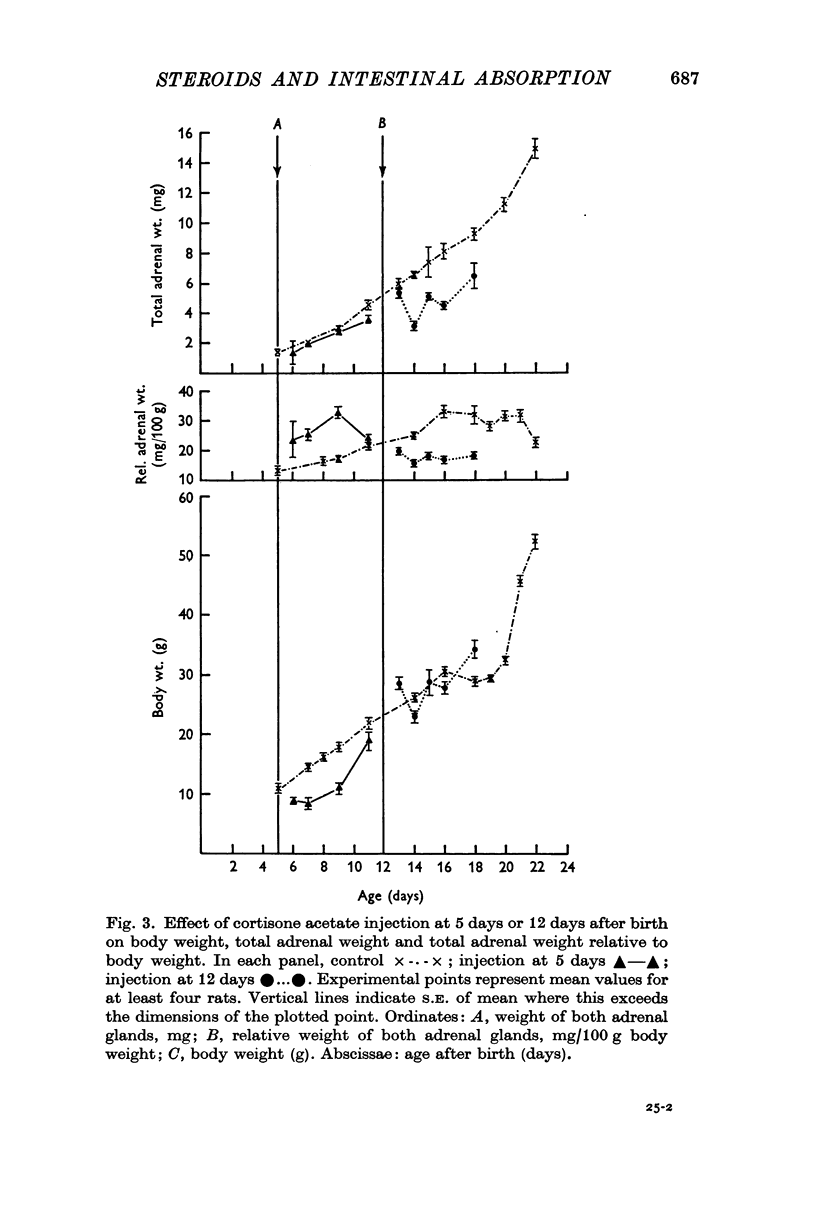
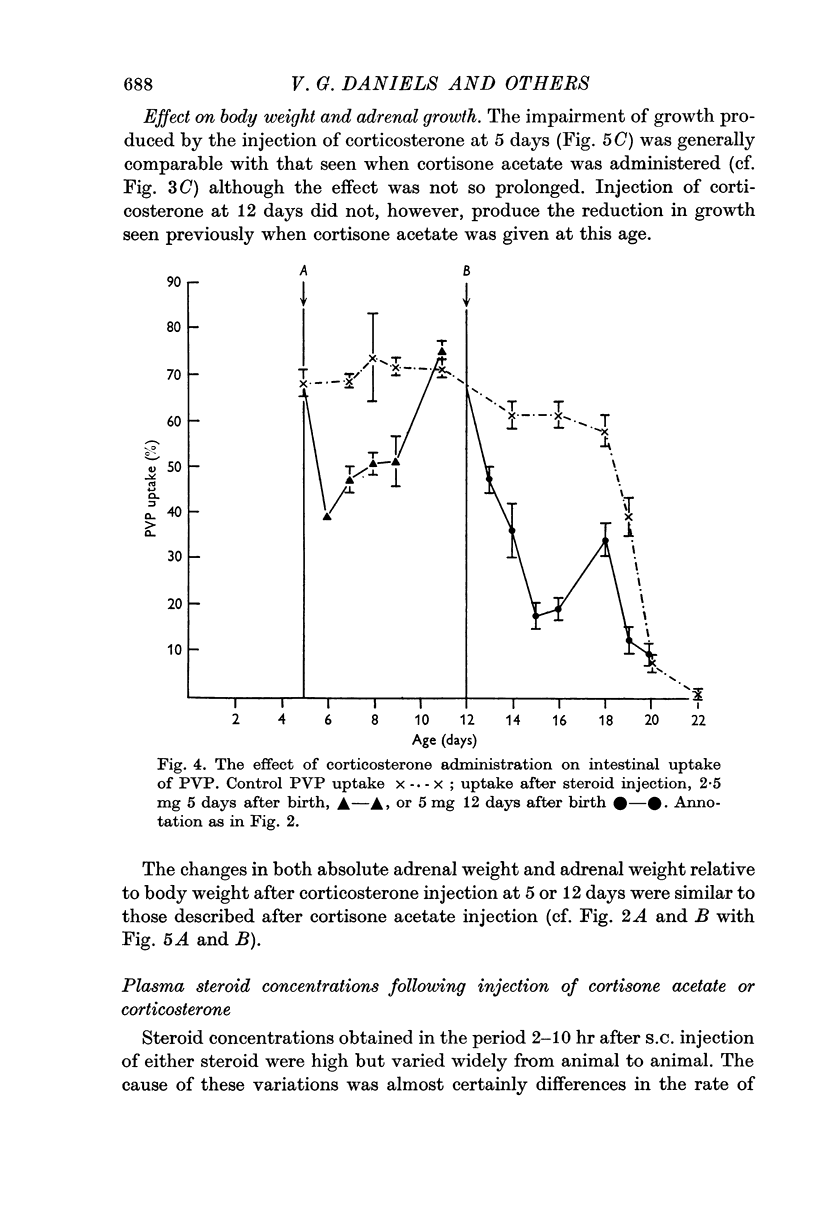
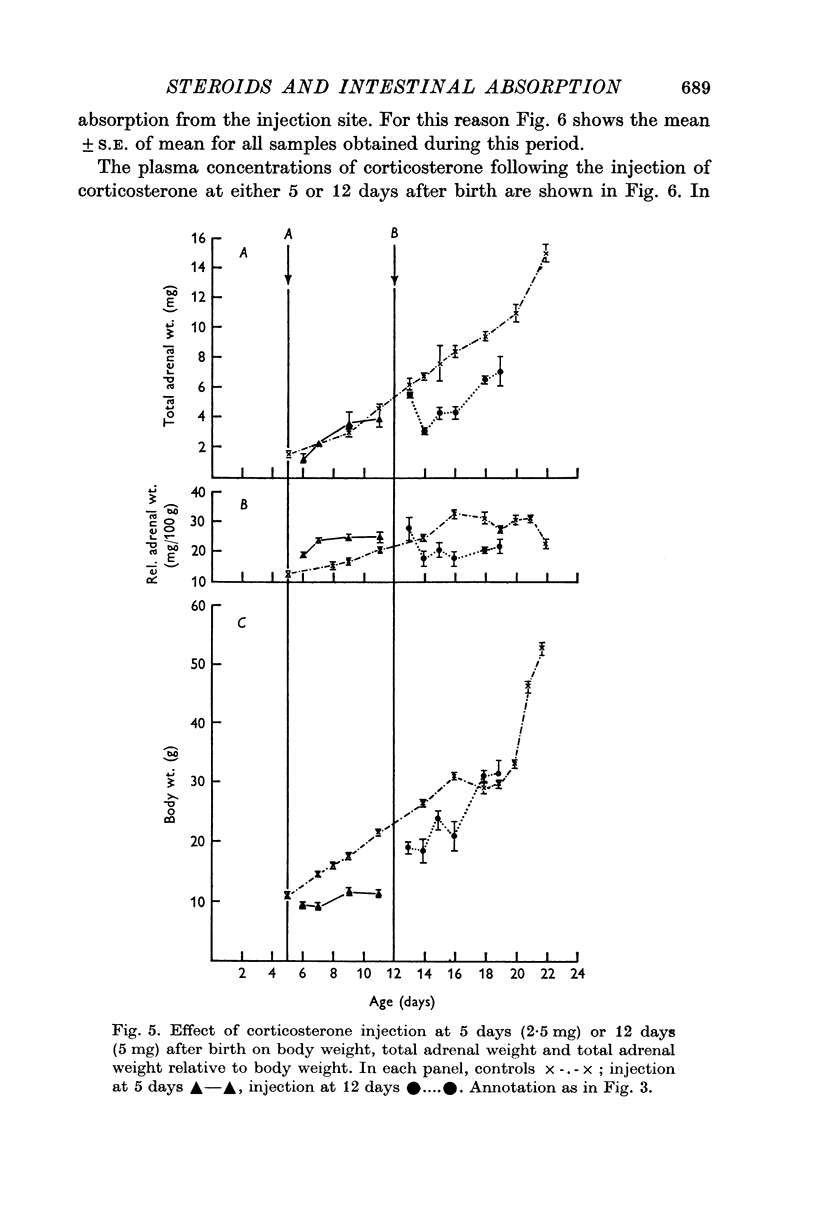
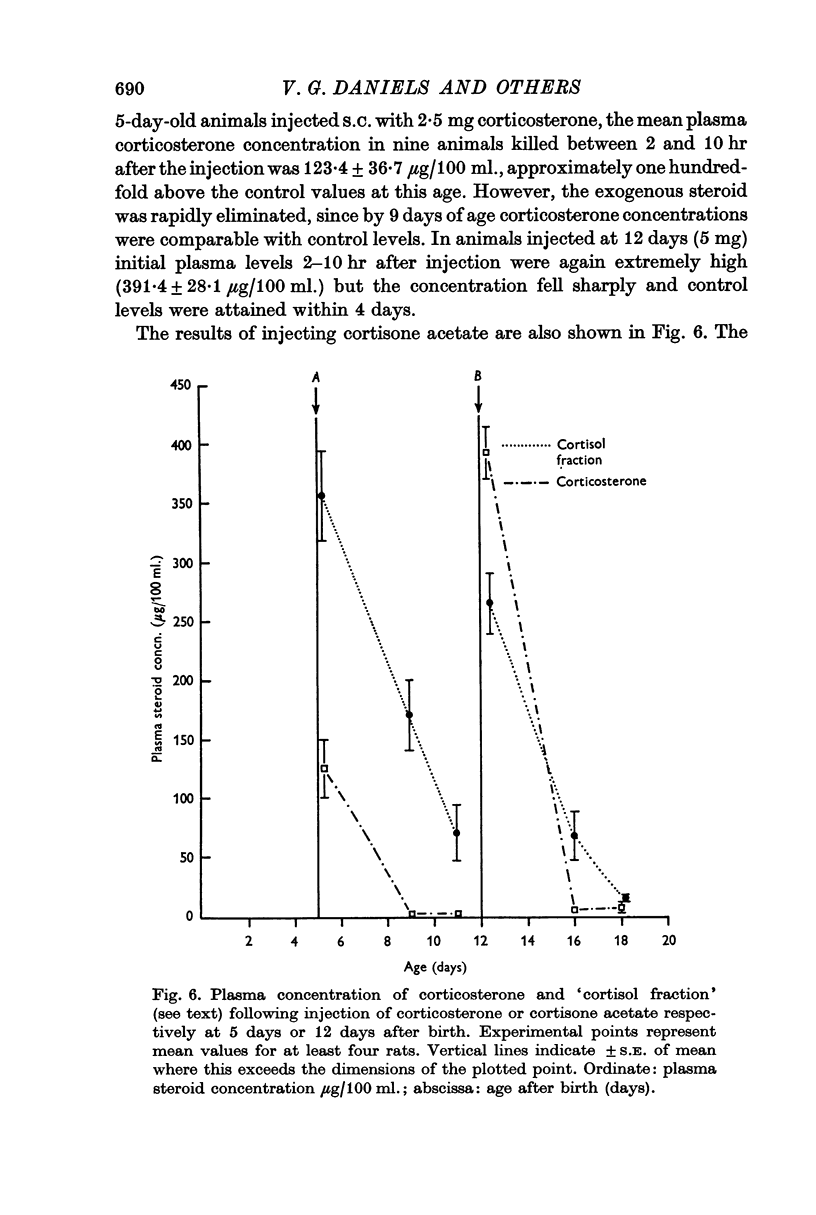
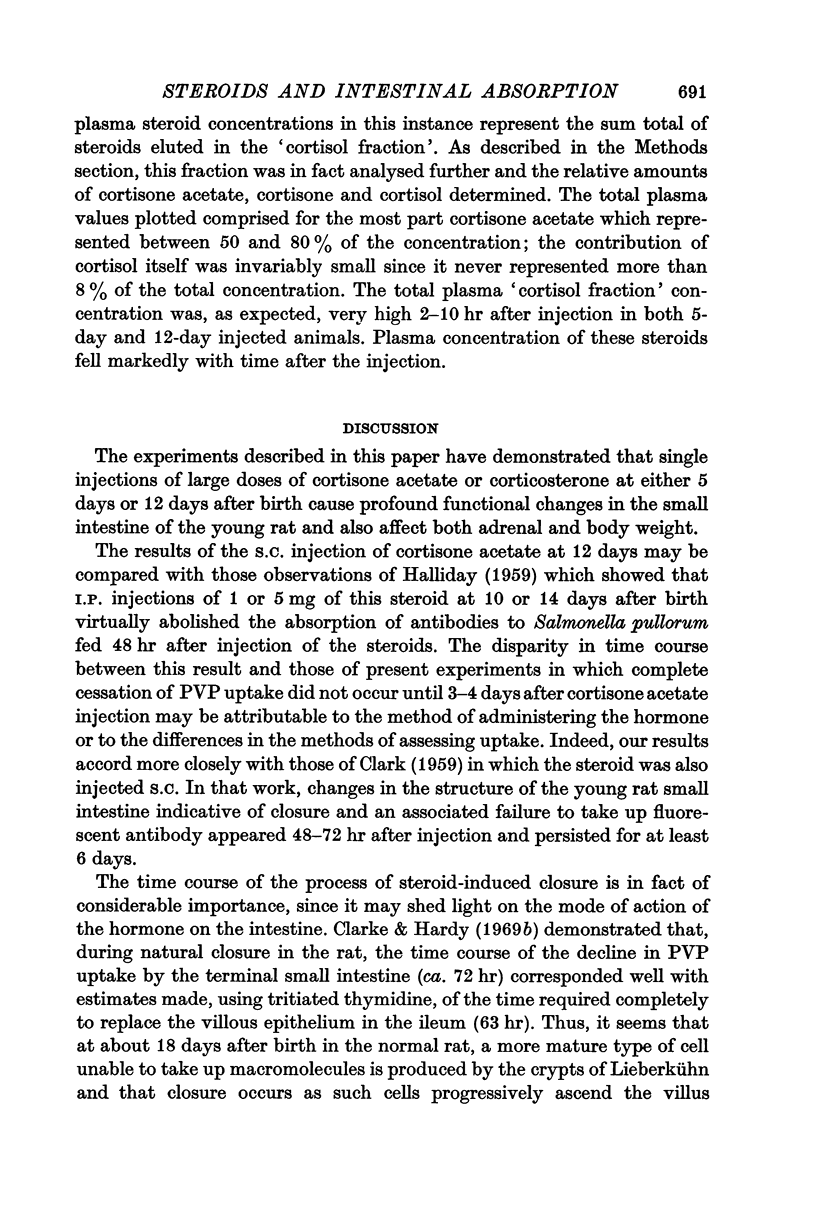
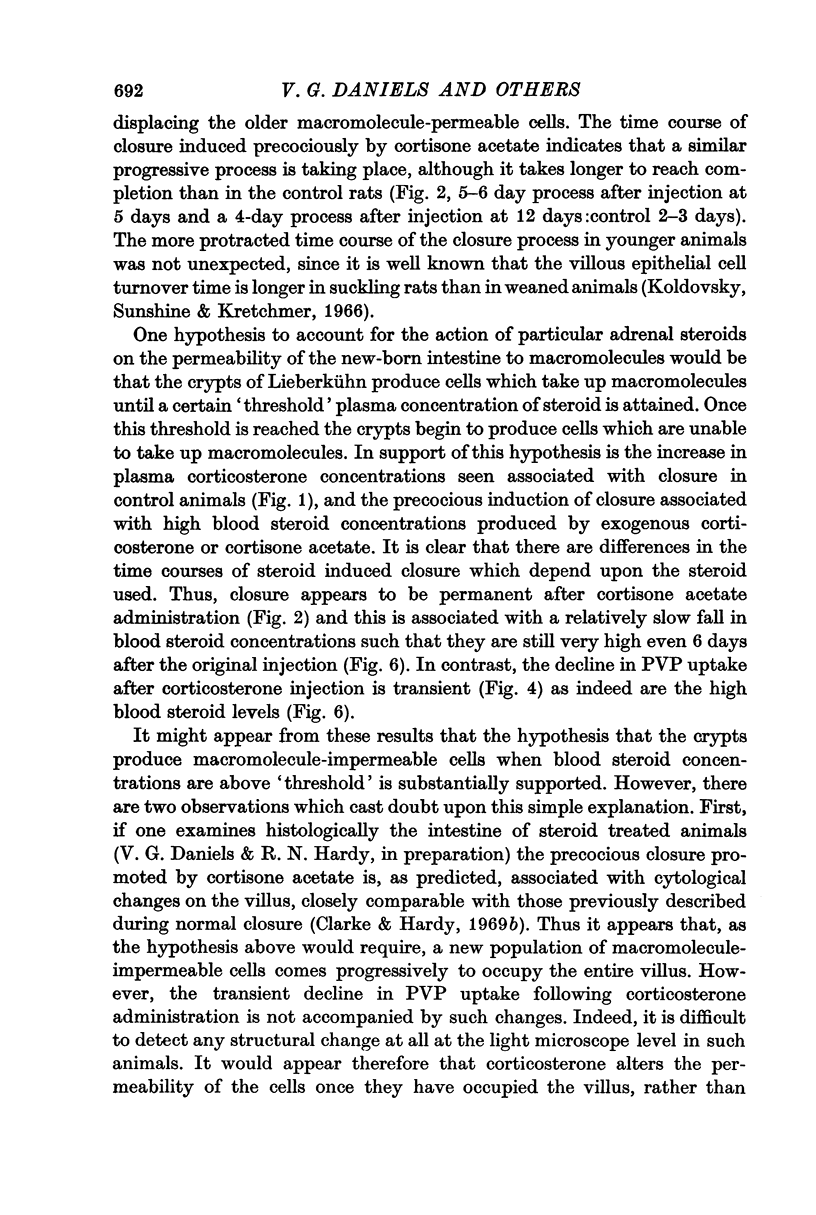
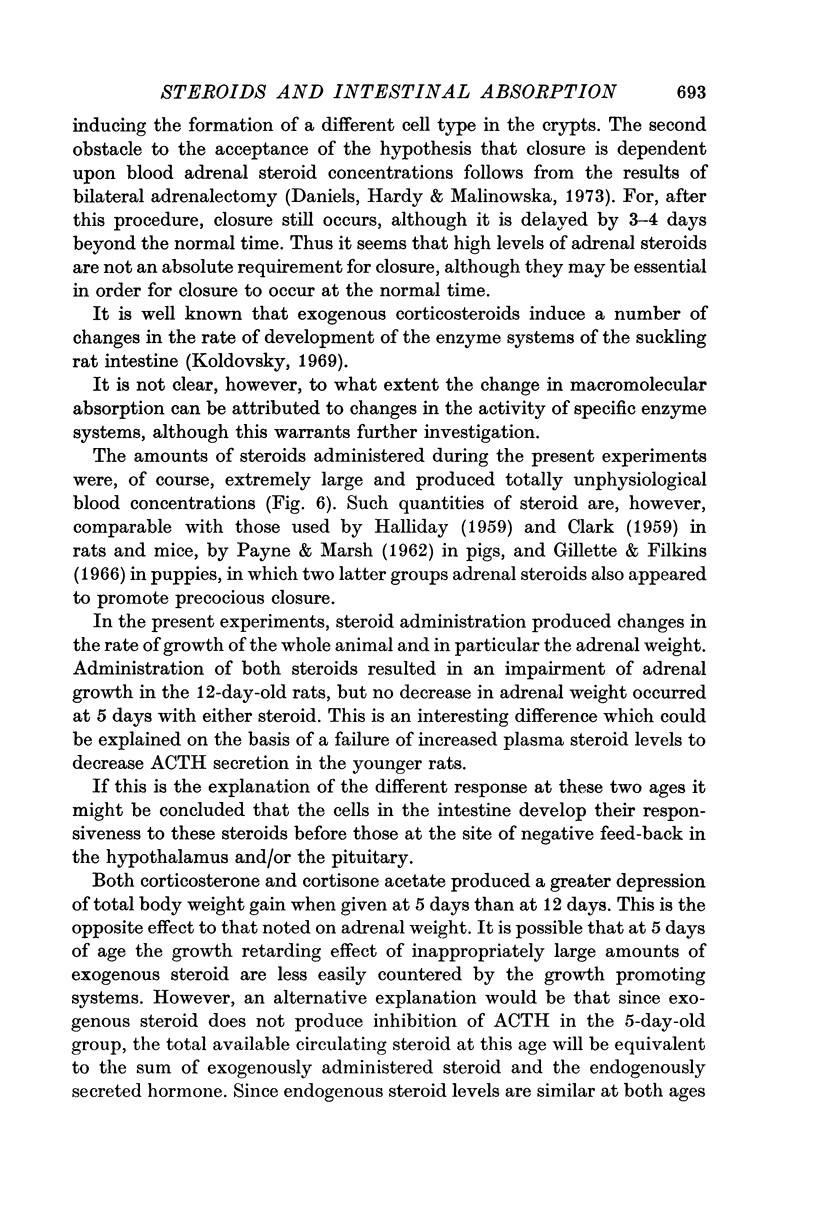
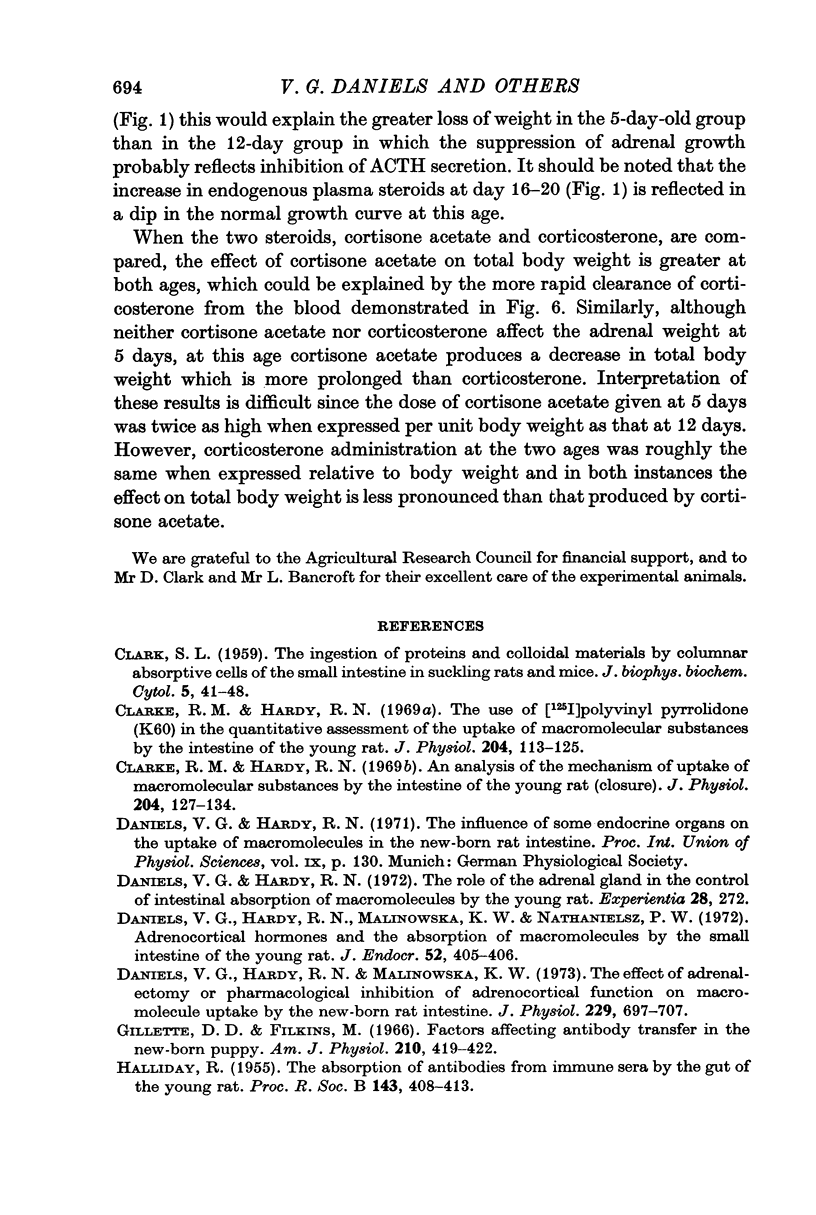
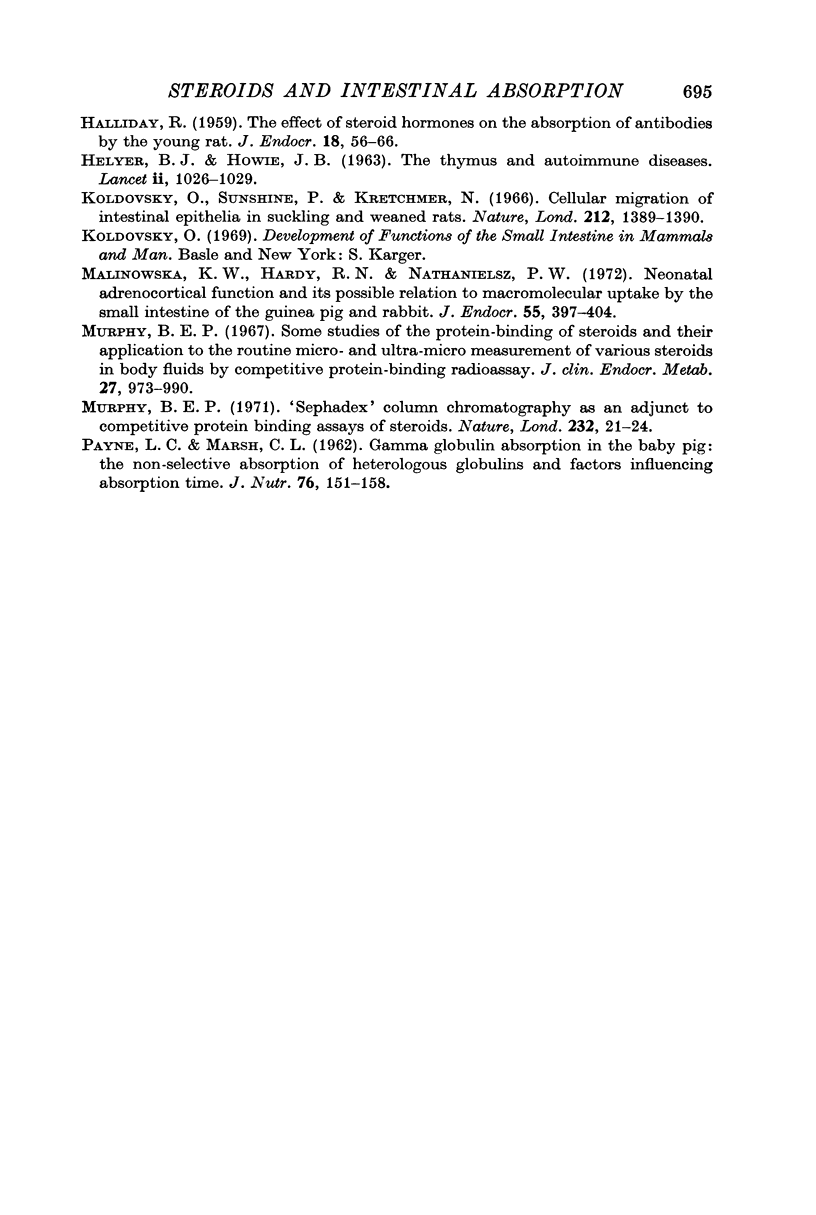
Selected References
These references are in PubMed. This may not be the complete list of references from this article.
- CLARK S. L., Jr The ingestion of proteins and colloidal materials by columnar absorptive cells of the small intestine in suckling rats and mice. J Biophys Biochem Cytol. 1959 Jan 25;5(1):41–50. doi: 10.1083/jcb.5.1.41. [DOI] [PMC free article] [PubMed] [Google Scholar]
- Clarke R. M., Hardy R. N. An analysis of the mechanism of cessation of uptake of macromolecular substances by the intestine of the young rat ('closure'). J Physiol. 1969 Sep;204(1):127–134. doi: 10.1113/jphysiol.1969.sp008903. [DOI] [PMC free article] [PubMed] [Google Scholar]
- Clarke R. M., Hardy R. N. The use of [125-I] polyvinyl pyrrolidone K. 60 in the quantitative assessment of the uptake of macromolecular substances by the intestine of the young rat. J Physiol. 1969 Sep;204(1):113–125. doi: 10.1113/jphysiol.1969.sp008902. [DOI] [PMC free article] [PubMed] [Google Scholar]
- Daniels V. G., Hardy R. N., Malinowska K. W., Nathanielsz P. W. Adrenocortical hormones and absorption of macromolecules by the small intestine of the young rat. J Endocrinol. 1972 Feb;52(2):405–406. doi: 10.1677/joe.0.0520405. [DOI] [PubMed] [Google Scholar]
- Daniels V. G., Hardy R. N., Malinowska K. W. The effect of adrenalectomy or pharmacological inhibition of adrenocortical function on macromolecule uptake by the new-born rat intestine. J Physiol. 1973 Mar;229(3):697–707. doi: 10.1113/jphysiol.1973.sp010161. [DOI] [PMC free article] [PubMed] [Google Scholar]
- Daniels V. G., Hardy R. N. The role of the adrenal gland in the control of intestinal absorption of macromolecules by the young rat. Experientia. 1972 Mar 15;28(3):272–273. doi: 10.1007/BF01928683. [DOI] [PubMed] [Google Scholar]
- HALLIDAY R. The absorption of antibodies from immune sera by the gut of the young rat. Proc R Soc Lond B Biol Sci. 1955 Mar 15;143(912):408–413. doi: 10.1098/rspb.1955.0020. [DOI] [PubMed] [Google Scholar]
- HALLIDAY R. The effect of steroid hormones on the absorption of antibody by the young rat. J Endocrinol. 1959 Jan;18(1):56–66. doi: 10.1677/joe.0.0180056. [DOI] [PubMed] [Google Scholar]
- HELYER B. J., HOWIE J. B. THE THYMUS AND AUTOIMMUNE DISEASE. Lancet. 1963 Nov 16;2(7316):1026–1029. doi: 10.1016/s0140-6736(63)90003-5. [DOI] [PubMed] [Google Scholar]
- Koldovsky O., Sunshine P., Kretchmer N. Cellular migration of intestinal epithelia in suckling and weaned rats. Nature. 1966 Dec 17;212(5068):1389–1390. doi: 10.1038/2121389a0. [DOI] [PubMed] [Google Scholar]
- Malinowska K. W., Hardy R. N., Nathanielsz P. W. Neonatal adrenocortical function and its possible relation to the uptake of macromolecules by the small intestine of the guinea-pig and rabbit. J Endocrinol. 1972 Nov;55(2):397–404. doi: 10.1677/joe.0.0550397. [DOI] [PubMed] [Google Scholar]
- Murphy B. E. "Sephadex" column chromatography as an adjunct to competitive protein binding assays of steroids. Nat New Biol. 1971 Jul 7;232(27):21–24. doi: 10.1038/newbio232021a0. [DOI] [PubMed] [Google Scholar]
- Murphy B. E. Some studies of the protein-binding of steroids and their application to the routine micro and ultramicro measurement of various steroids in body fluids by competitive protein-binding radioassay. J Clin Endocrinol Metab. 1967 Jul;27(7):973–990. doi: 10.1210/jcem-27-7-973. [DOI] [PubMed] [Google Scholar]
- PAYNE L. C., MARSH C. L. Gamma globulin absorption in the baby pig: the nonselective absorption of heterologous globulins and factors influencing absorption time. J Nutr. 1962 Feb;76:151–158. doi: 10.1093/jn/76.2.151. [DOI] [PubMed] [Google Scholar]


